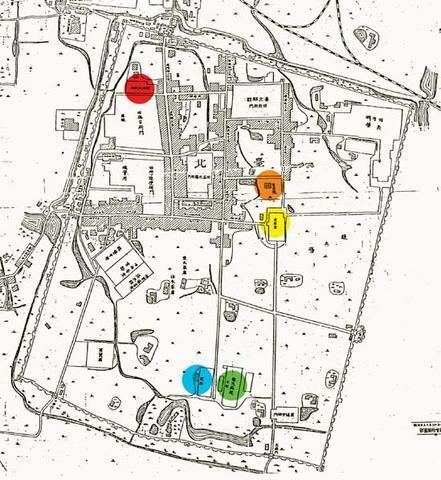 | ||
The Taipeh City Walls (Chinese: 臺北府城; pinyin: Táiběi Fǔchéng) were established in 1884 in Taipeh Prefecture, Qing Taiwan (modern-day Taipei, Taiwan). Shortly after the Qing dynasty established Taipeh Prefecture in 1875, Prefect Chen Hsing-chü (陳星聚) ordered the foundation of a new prefectural capital, with enclosing wall in 1879. However the soil proved too soft to support so heavy a structure, and the project was halted. Subsequently, governor of Fujian Cen Yu-ying (岑毓英) and Taiwan magistrate Liu Ao (劉璈) undertook successive surveys to determine the proper location of the wall's foundations. Craftsmen were recruited for the construction in 1882, and the wall was completed in 1884.
Nearly five kilometers in length, it could be accessed by five gates: Taipei East Gate, Taipei West Gate, Taipei South Gate Taipei North Gate, and Taipei Auxiliary South Gate. The North Gate Auxiliary South Gate, and the buttresses of the East Gate were of particularly exquisite design.
In the first years of the Japanese colonial rule (ca. 1895), the city's walls and the West Gate were destroyed as part of the cities restructuring plan. After Taiwan's handover in 1945, the East, South, and Auxiliary South Gates were rebuilt, but the original appearances were not maintained. The North Gate alone retains its original appearance. Its design is a 2-story closed blockhouse of solid construction with traditional Chinese wooden roof truss and streamlined carved ornamentations.
